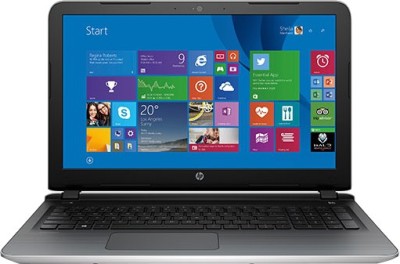ASUS GX501 Zephyrus Gaming Laptop Review
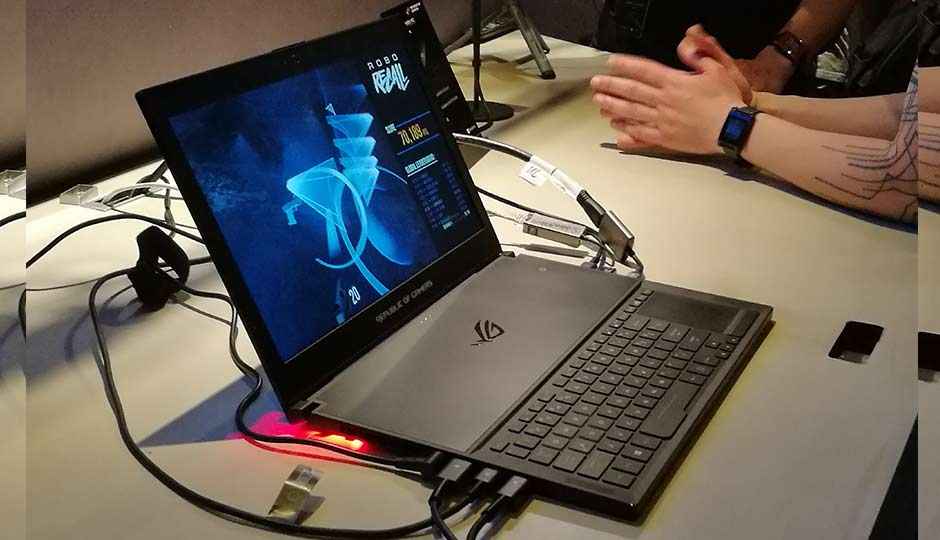
- 299999/-
ASUS GX501 Zephyrus Gaming Laptop Price in India
ASUS GX501 Zephyrus Gaming Laptop Rating 83100100
Our Verdict
The ASUS ROG GX501 Zephyrus bridges the gap between performance and portability. At Digit, we simply can’t count the number of times that we’ve been asked for recommendations that could not only provide great portability but also not compromise on performance. Often, the answer was an either-or but never could you have an option with both. The ROG GX501 gives you great portability thanks to its 18 mm thickness and low weight of 2.25 kg. However, it’s still a 15.6-inch laptop which will dissuade some buyers. On the performance front, the Max-Q enabled GTX 1080 can easily handle every single AAA game running at Ultra settings. The downside is that the battery doesn’t last long and that was never a concern while gaming. However, even with normal everyday tasks, we’re gettings 2-2.5 hours at max. There is a solution for that, the CPU and GPU are extremely over-powered for normal day-to-day tasks. So we used Intel Extreme Tuning Utility to ramp down the CPU while we were not gaming. A similar thing can be done to the GPU using MSI Afterburner. We easily managed to get more than 3 hours with these enhancements, however, had we played around with the power profiles a little longer, we could have come out with a better profile. Overall, the ASUS ROG GX501 Zephyrus with its unique proposition offers what no other laptop does in the Indian market right now – a slim and powerful machine. The ball now lies in the competition’s court to see when the other Max-Q laptops make it to India.
PROS
- NVIDIA MAX-Q GTX 1080
- Extremely portable
- Great display
CONS
- Underside is a bit flimsy
ASUS GX501 Zephyrus Gaming Laptop: Detailed Review
ASUS’s GX501 or Zephyrus has been enjoying quite a bit of attention thanks to it being the first gaming laptop to feature NVIDIA’s Max-Q technology. NVIDIA’s Max-Q is a set of technologies pertaining to physical design, electrical design and thermal design. Currently, the GTX 1060, GTX 1070 and GTX 1080 GPUs have Max-Q variants and the Zephyrus is part of the first wave of laptops to feature them. Others include the Acer Predator Triton 700, GIGABYTE Aorus X5 MD, MSI GS63VR Stealth Pro-002, GS73VR Stealth Pro-033 and the Clevo P950HR. Except the Zephyrus, we couldn’t find listings for the other models in India. At the Computex 2017 ASUS press event, it was revealed that NVIDIA and ASUS have a joint design facility from where the Zephyrus was born, which makes it the first ever gaming laptop with Max-Q.
Naturally, we were a bit curious to have a look at how a Max-Q laptop is designed. So we took the unit apart to take a peak inside and discovered an entirely different approach to cooling. Before we get into that, let’s have a look at the specs.
ASUS GX501 Zephyrus Specifications
The ASUS GX501 Zephyrus is powered by the Intel Core i7-7700HQ and an NVIDIA GTX 1080 (Max-Q). So we’re expecting quite a lot from the unit, what stands to be seen is where the laptop throttles, if at all it does, and how much do we end up losing out on performance, if at all throttling should happen.
ASUS GX501 Zephyrus Specifications | |
Processor | 7700HQ 2.8 GHz |
Platform | HM175 |
RAM FSB | 2400 MHz |
RAM Capacity | 24 GB |
Screen Size | 15.6–inches 120 Hz G-Sync |
Screen Size | 1920x1080 |
GPU | GTX 1080 8 GB DDR5X (MAX-Q) |
SSD | Samsung SM961 1 TB NVMe |
HDD | NA |
Ethernet | NA |
Wi-Fi | Intel Dual Band Wireless-AC 8265 |
Audio | Realtek ALC295 |
Battery | 3255mAh 50 Whr @17.2v |
AC Adapter | 230 W |
Weight | 2.25 Kg |
Despite the thinness of the laptop, ASUS has managed to squeeze in a 50 Whr battery which is commendable feat, however, with a GTX 1080 that’s set to be drained quickly. The other noteworthy addition is that of a 230 W power adapter. We’ve seen some units from the competition carry lower wattage adapters since the GPU is designed to work for a lower power envelope, with the Zephyrus, it seems we’ll not have that issue.
Chassis Build
he Zephyrus has a very minimalist approach. The top half of the clam has a brushed metal finish with a sharp line where it appears as if two halves meet just like the confluence of two streams.

There’s hardly any elevation in the centre of the laptop. It’s very thing coming in at 17.9 mm.
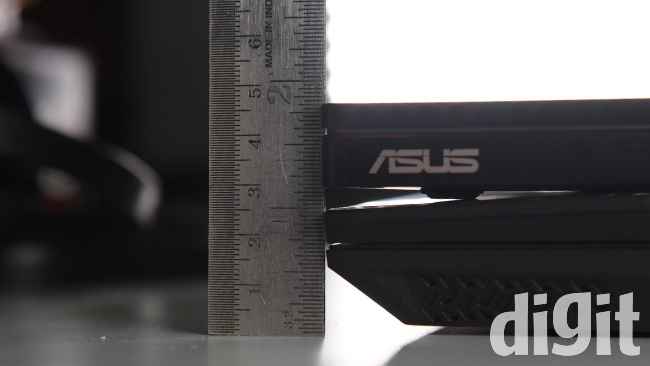
The underside is very different from all the laptops we’ve seen for a really long time. Why? The absence of vents, that‘s why. There are two lean vents on either side but they seem ridiculously ill-prepared to handle an NVIDIA GTX 1080.
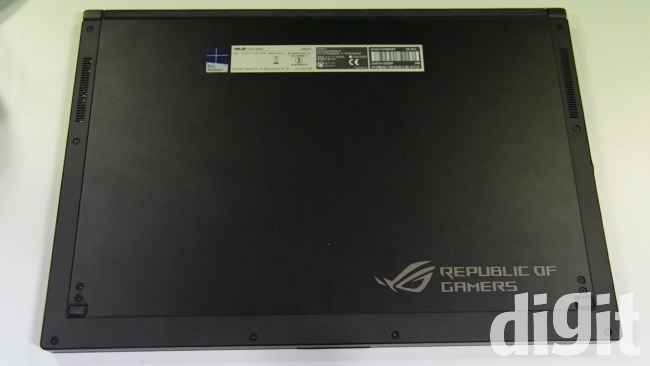
It’s only when you open the lid, that you see vents magically appear out of nowhere.
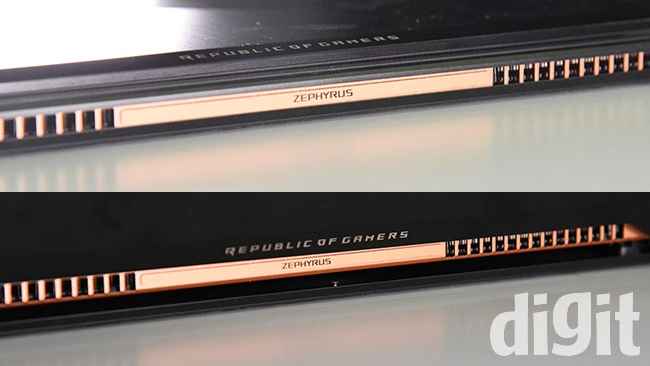
This is because the entire flat panel under the laptop acts as a hatch. Opening the lid extends two levers which adds separation between the hatch and the bottom of the laptop as we can see in the lower portion of the above image. Upon removing the bottom hatch, we see a completely sealed off underside. All that’s exposed are two cooling fans which intake from the bottom. And then there’s the hinge that extends outwards to elevate the Zephyrus. Let’s take a closer look at the hinge.
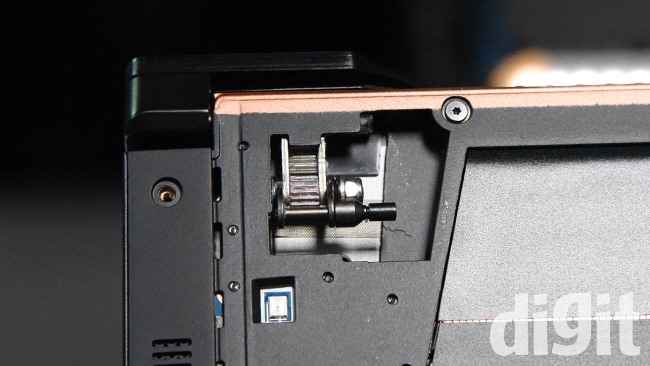
It appears to be fairly sturdy and the thickness of the metal plates that form the hinge mirror what we’ve seen in other laptops. The small part that’s jutting out goes into the plastic guide that’s shown below.
The only concern here is that over time, this guide is going to erode a bit. So having metal inserts in the groove or making the entire thing out of machined metal would have been a better approach.
Not being satisfied with a huge plain plastic sheet, we then proceeded to further dissect the laptop only to come across quite a bit of FRCs. Thanks to the thin construction, ASUS has managed to make good use of the limited space they set out to work with. Which is why, once opened up, we ended up with this.
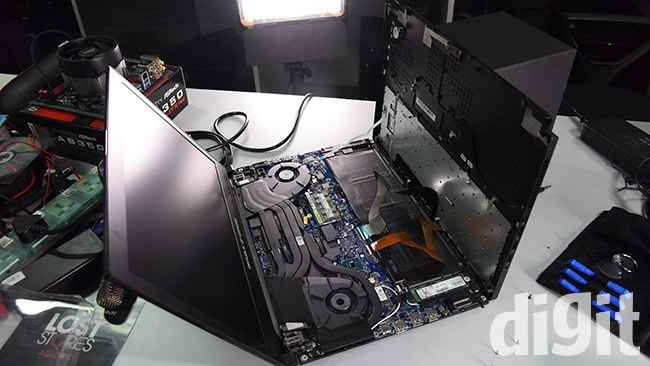
The display panel is on the left and the hatch is on the right. Upon closer inspection, we see that hatch is mostly comprised of a keyboard and vents for hot air to slip out. Since most of the heat is being vented from the rear, there’s barely anything coming out through the top hatch. Adding dust filters to the vents on the hatch is a good move.
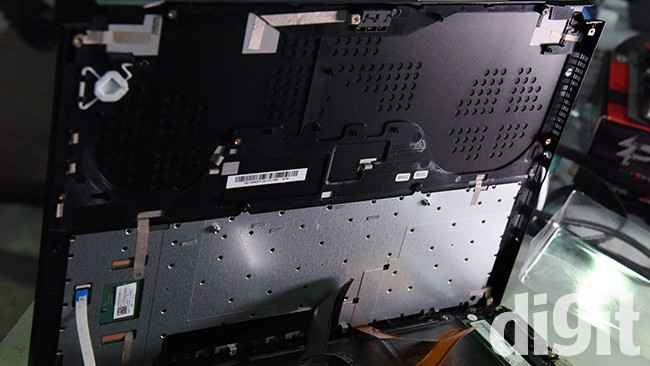
Here’s how the motherboard appears from the top. We can see that the cooler takes up the most real estate with the battery coming in at a close second. There’s one slot for RAM on this side of the motherboard which is populated by a SAMSUNG 16 GB DDR4 DIMM rated at 2400 MHz.
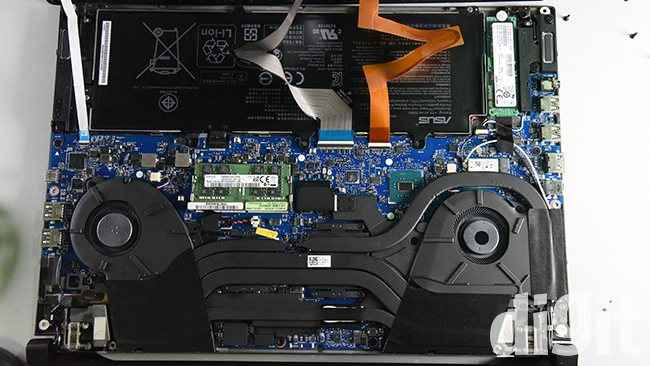
Because of the space taken up by the cooler and the battery, we see why ASUS couldn’t squeeze in a memory card reader. The cooling assembly has multiple heatpipes routed right over the CPU, GPU, VRM and the Memory chips for the CPU. Nothing’s exposed aside from the PCH.
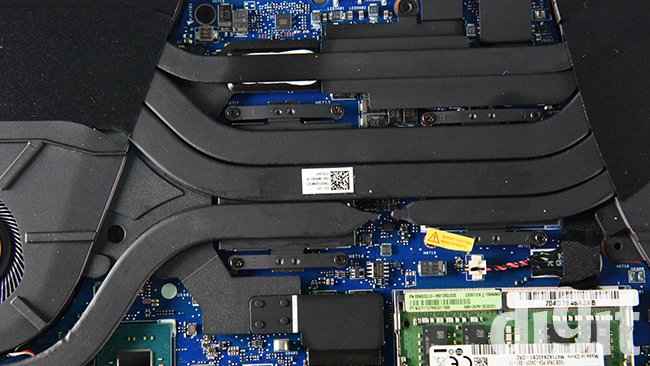
The audio on the GX501 Zephyrus is very standard, and these aren’t down-firing speakers which is the common arrangement seen in most laptops today. Such an arrangement ends up being louders which is a nice thing, however, you are also susceptible to dust collection. Since these pores are really minute, you won’t have as much dust getting accumulated as compared to an arrangement with really big vents.
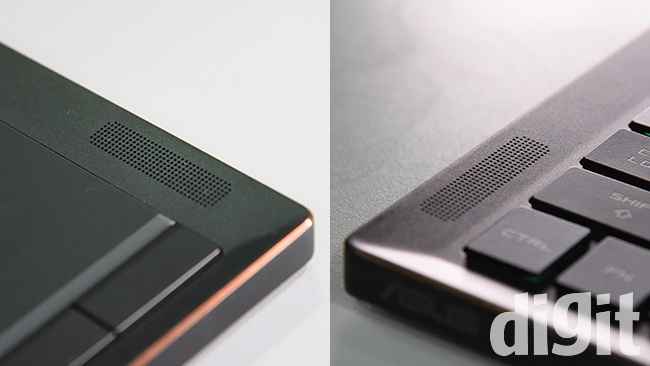
The topside, has a classy ROG logo with activity LEDs placed right near the edge. The LEDs aren’t distracting when using the laptops in a dark environment.
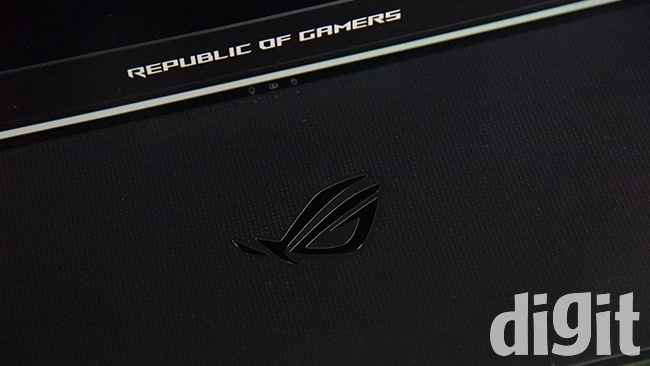
The build of the GX501 Zephyrus is really unique. We can see why NVIDIA chose ASUS as the first partner to come out with the MAX-Q laptops. This was revealed by NVIDIA CEO, Jen-Hsun Huang at the COMPUTEX 2017 press conference. Cramming in all the features expected from a high-end gaming laptops without all the accompanying bulk really sets MAX-Q laptops apart. Moreover, they sport a hefty price tag too. However, with the new Intel Kabylake-G CPUs, we see this trend to become common and affordable soon.
Keyboard and Touchpad
Bringing the keyboard lower on the body isn’t a new concept, however, it certainly is necessary in this case as the GTX 1080 should start heating up under load. And since the laptop is particularly thin, the touch temperature would be high. However, with this design the user will not face any discomfort. As seen from the chassis design, the keyboard rests atop the battery so there’s no worry of higher touch temperature at all.
The absence of a numpad can be really irksome for those who’re used to a gaming on the desktop. Especially, if you’re into MMOs wherein a lot of macros are needed. Having the touchpad turn into a numpad makes up for that by a margin. In this case, you still need to glance at the pad since you might end up accidentally pressing the wrong macro as there are no physical marks to distinguish between the different keys. You never want to be “that support guy” who accidentally casts a charm right in the midst of a boss battle instead of a heal. That kind of accidents will get you booted from the raid and possibly from the guild as well.

Lastly, it’s nice to see that the ‘Home’ and ‘End’ keys being incorporated in the last two buttons atop the touchpad. Being one of the most used keys on the keyboard for us, it’s an appreciated configuration.
I/O ports
The thing with thin laptops is that you have to resort to thinner ports. If not, then the bezel around the ports end up becoming too thin and tend to bend. Which is why you see USB Type-C ports on thin gaming laptops and convertibles. Since the ASUS ROG GX501 is thicker than most convertibles, they’ve added USB Type-A ports on both sides. All of them being USB 3.1 except the Type-C port which is 3.2. There’s an HDMI port included. The only obvious ports that aren’t present are the Ethernet port and a card reader.
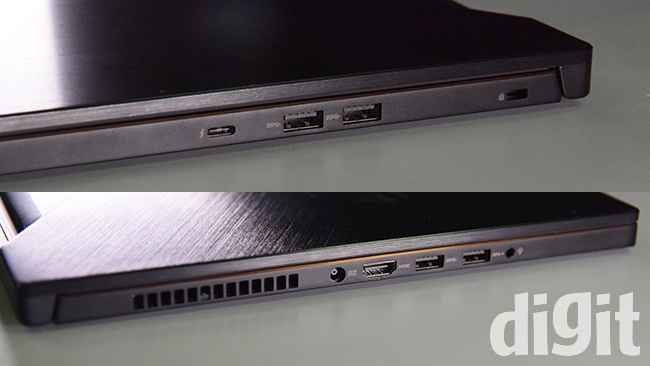
We do get USB Type-C to Ethernet adapters in case you need them. However, an Ethernet port is 13.5 mm tall so once we take out the thickness of the display from the overall thickness of 18 mm and allow for clearance as well, it becomes completely unfeasible to have an Ethernet port. Gaming is generally preferred over wired connections for the better ping, we didn’t find a major difference in the ping while playing over Wi-Fi. It should be noted that we played PLAYERUNKOWN’S BATTLEGROUNDS over Wi-Fi and our ping is generally around the 15 ms mark over wired connection. With Wi-Fi, we saw it hover around 18-19 ms which is still very good.
If you look at the GX501 from an internal perspective then the bottom half is devoted for the battery and the top half is devoted for the cooling assembly as shown in the image above. Towards the sides, they’ve managed to squeeze in a portion of the motherboard onto which the ports and the PCIe SSD are mounted. A card reader slot takes up quite a bit of space both vertically and horizontally. If one had been included, then we’re looking at losing out on two existing ports. That’s a trade off we’d rather not make. So, we can see that the card reader wasn’t included for a very good reason.
Display
The ASUS ROG GX501 features a 24-inch IPS panel with a resolution of 1920x1080. Sure, the GTX 1080 will easily handle 4K gaming but we believe that the 1080p panel was chosen to ensure the GPU didn’t get overworked. If you were to switch on Dynamic Super Resolution, then you’ll get a the same compute overhead as a 4K panel. And the GPU should heat up to an unnecessary level.
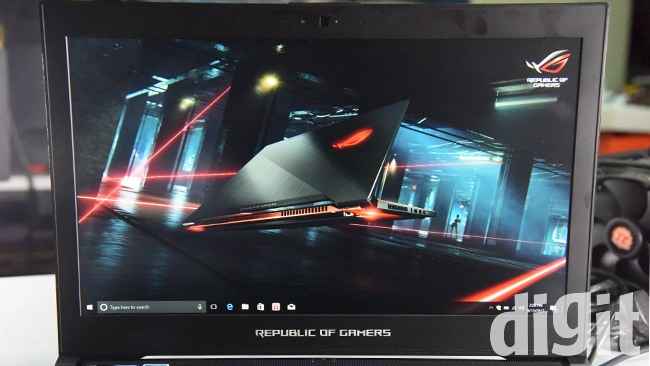
The display panel model number is B156HAN04.0 HW1A which makes it an AU Optronics panel. Spec wise, it’s got a typical brightness of 220 cd/m2 and viewing angles that extend all the way to 85 degrees from each edge. The typical contrast ratio is 800:1 and the sub-pixel arrangement is vertical RGB.
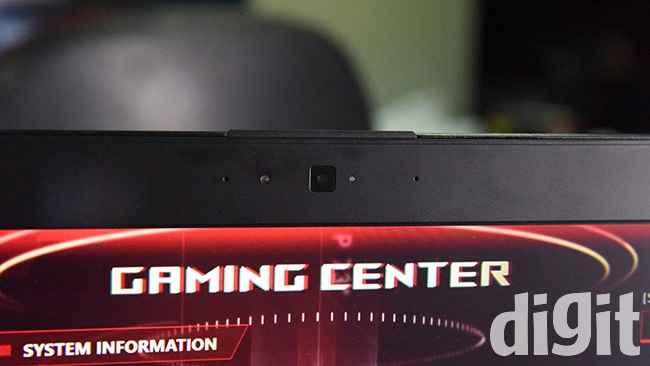
The webcam is HD ready which seems to be the norm these days. Image clarity wasn’t out of this world but it’s enough for most use cases. Should you need better quality it’s always advisable to go with a Logitech C920 or better.
Since the Zephyrus makes use of the fancy hatch system, the rear of the laptop gets a little elevated upon being completely open. At this point, the display is at an angle of 120 degrees from the base. Compared to some of the previously tested units, this seems a bit low if you were to keep the Zephyrus on your lap. Anything over 140 degrees is where things start getting more comfortable. And as mentioned earlier, your lap isn’t the right place for this laptop.
The panel is quite well sealed off, there’s hardly any bleed which is consistent with most laptops in this price bracket.
Performance
We’re looking at a very common configuration with the Acer Nitro V AN515-51. The Intel Core i7 7700HQ coupled with 16 GB of DDR4 RAM clocked at 2400 MHz ensure a pretty high headroom for most mundane tasks. Throw in an NVIDIA GTX 1050 (4 GB) and you have a gaming laptop that can crunch out upwards of 40 FPS at High settings on most AAA games. The more recent ones tend to bring the 1050 down to its knees but we always advise a little bit to tweaking to bring out the most of your hardware.
We started off with CineBench R11.5 and R15 and the Acer Nitro V AN515-51 scored 8.13 and 733 in those benchmarks, respectively. WinRAR’s compression benchmark scored 7822 KB/s which is very similar to the MSI GE62 7RE that we’ve tested earlier. As for PCMark8, we used Accelerated to leverage the GPU and ended up with a score of 4985 on PCMark8 Creative (Acc.), 3988 in PCMark8 Home (Acc.) and 4917 in PCMark8 Work (Acc.). It should be noted that there was a validation issue with the drivers obtained from Acer’s website but the scores lined up with similar configuration from competing models, so all’s well.
Storage
The Kingston SSDNow 128 GB managed to get 445.9 MB/s for read speeds and 361.9 MB/s for write speeds. Notably, 4K speeds were pretty good for a normal SSD. It’s nowhere close to NVMe speeds but in its class, you’re not going to find any NVMe SSDs anyways. Overall, we’d say that the SSD performs at par with most in its speed class.
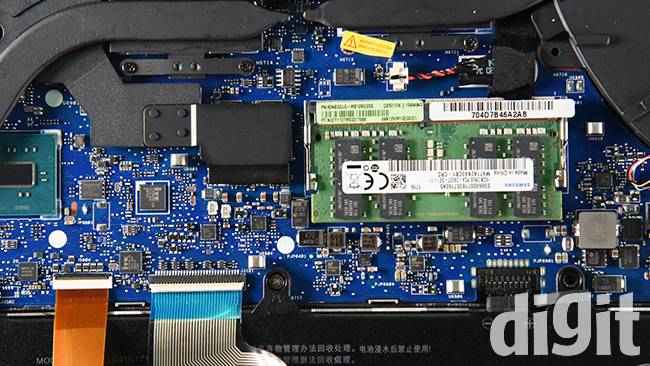
Also, 128 GB is enough for your OS and a few extra apps, but as we mentioned earlier, 256 GB is what we prefer as the minimum. The other drive is a WD Blue rated for 5400 RPM and there’s hardly ever any difference in performance between 5400 RPM SKUs. Almost all of them feature a similar cache capacity and characteristics across different file sizes remain the same.
SD Card Reader
For the SD card reader, we use a 32 GB Lexar 1000x UHS-II SD card which easily gives 135 MB/s read speeds and 55 MB/s write speeds on USB 3.0 SD card readers and on the Acer Nitro V AN515-51 we managed to get about 32 MB/s. Though not exceptional, it’s more than sufficient to get the job done.
Wi-Fi
For Wi-Fi and Bluetooth, the Acer Nitro V AN515-51 makes use of the Qualcom Atheros QCNFA344A. It’s a dual band 802.11ac adapter that has a peak throughput of 300 Mb/s on the ‘n’ band and 867 Mb/s on the ‘ac’ band. We used iPerf to see how well the add-on card fared over the ‘ac’ band. We managed to get 514 Mbps on the throughput and about 76 Mbps via a single stream which is more than sufficient for gaming or otherwise.
It doesn’t feature a separate QoS solution to prioritise traffic, but you can always install one yourself and get the job done.
Gaming
A combination of the Intel Core i7 7700HQ with the NVIDIA GTX 1050 is quite powerful, however, a better configuration would be to have the Core i5 7300HQ with an NVIDIA GTX 1050 Ti. Surprisingly, Acer has that model available for Rs.74,999 which makes it the lowest priced laptop with an NVIDIA GTX 1050 Ti. Coming back to what we have on hand, we started with the trusty 3DMark with the latest NVIDIA drivers (384.94). We managed to get 5514 in Fire Strike 1.1, 2659 in Fire Strike Extreme and 1228 in Fire Strike Ultra. With the NVIDIA GTX 1050 set to 1354 MHz, these scores are at par and sometimes even higher by a few points.
In TimeSpy, we scored 1790 and for reference sake, we also ran Ice Storm, Cloud Gate and Sky Diver. Our scores were 101023, 20261 and 17007, respectively.
Moving on to games, Rise of the Tomb Raider had a pretty decent on both, high and medium settings. On high we got 46.68 and on medium it was 50.84 FPS. With DOOM, we got 45 FPS in Ultra and in GTA V on High, we managed to get 66 FPS.
Pricing
There are quite a few units in the market that provide a similar hardware configuration. There’s the MSI GP62 7RDX for Rs.112,990, the Dell Inspiron 7567 for Rs.115,469, ASUS ROG GL553VD for Rs.87,299, Lenovo Legion Y520-15IKBN at Rs.92,490 and HP Omen 15 AX250TX for Rs.106,990. All of these feature the Intel Core i7 7700HQ, NVIDIA GTX 1050 4 GB, 128 GB SSD and a 1 TB hard drive. The ASUS GL553VD is the closest that comes to this configuration but it has only 8 GB of RAM against the 16 GB that the Acer Nitro V AN515-51 has. The Legion Y520 has the same configuration as the ASUS SKU but it costs a little extra and almost every other competing laptop costs Rs.17,000 or more. Essentially, we’re hard pressed to find a better deal than the Acer Nitro V AN515-51 for its configuration. Moreover, the other Nitro V SKU has a 1050 Ti at 75K which was unbeatable in terms of pricing at the time of writing this review. We bid you the best of luck to find a better deal than the Acer Nitro V AN515-51 at Rs.89,990.
Other Popular Deals
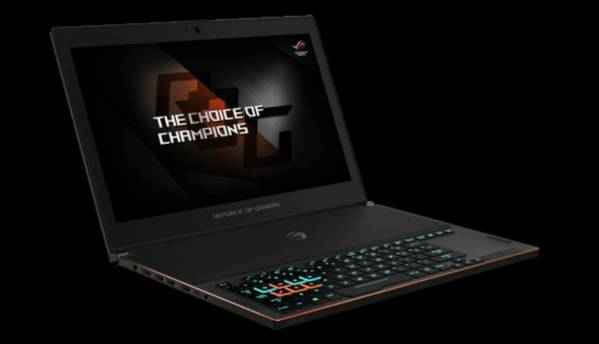 Asus ROG launches Zephyrus, world's thinnest gaming notebook with NVidia GTX 1080
Asus ROG launches Zephyrus, world's thinnest gaming notebook with NVidia GTX 1080Asus’ Republic of Gamers (ROG) brand has launched its Zephyrus gaming laptop in India. Priced at Rs 2,99,990, the company claims that it is the...
16 - Aug - 2017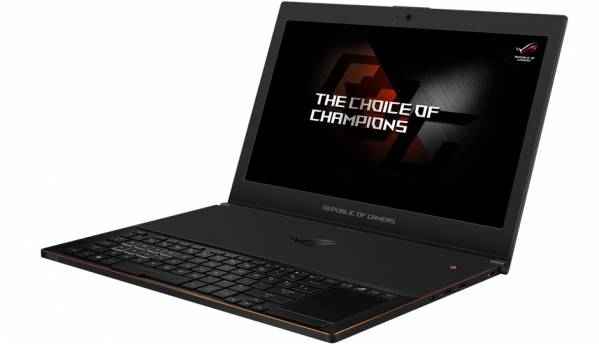 Zephyrus, world's thinnest gaming laptop announced by ASUS Republic of Gamers
Zephyrus, world's thinnest gaming laptop announced by ASUS Republic of GamersZephyrus, the world’s slimmest gaming laptop powered by a 7th Generation Intel® Core™ i7 (Kaby Lake) processor and the latest...
30 - May - 2017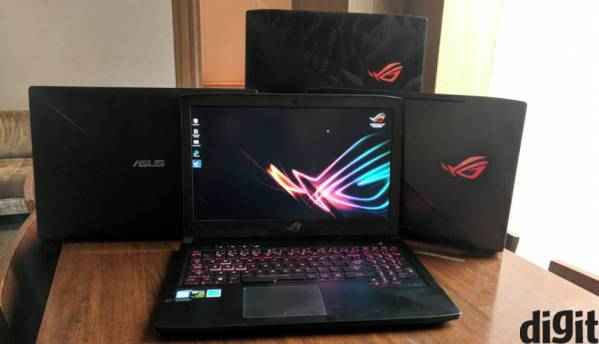 Asus launches four new gaming laptops in India starting at Rs 69,990
Asus launches four new gaming laptops in India starting at Rs 69,990Asus has launched four new gaming laptops in India, three of which are variants of the Asus ROG Strix GL503, the base variant is...
20 - Dec - 2017

ASUS's GX501 or Zephyrus has been enjoying quite a bit of attention thanks to it being the first gaming laptop to feature NVIDIA's Max-Q technology. NVIDIA's Max-Q is a set of techno...
---------------------------------------------------------------------------
Visit this link to stop these emails: http://zpr.io/PnAEp




